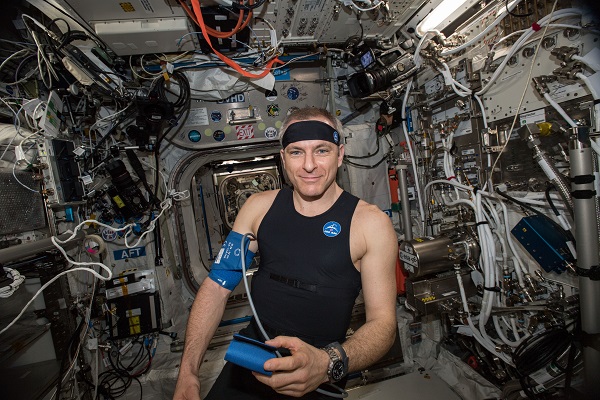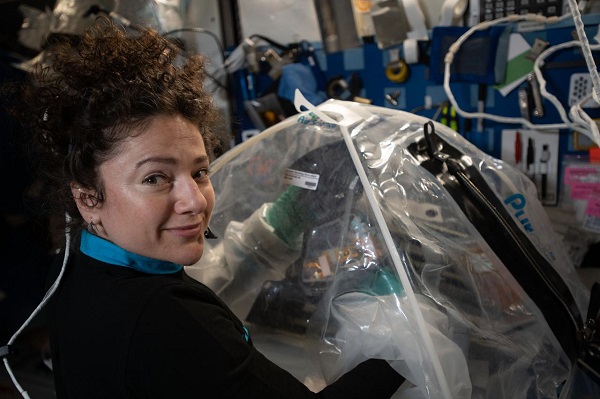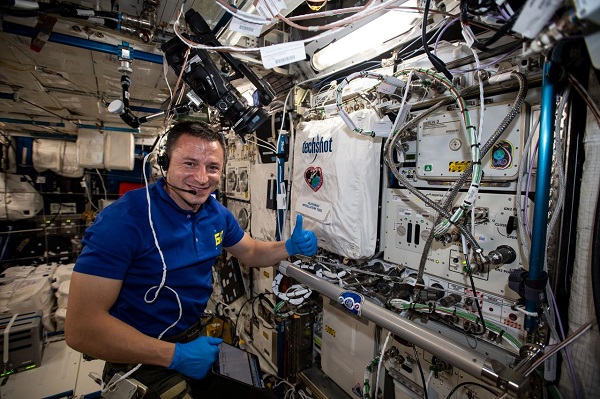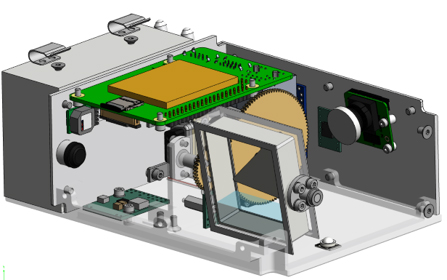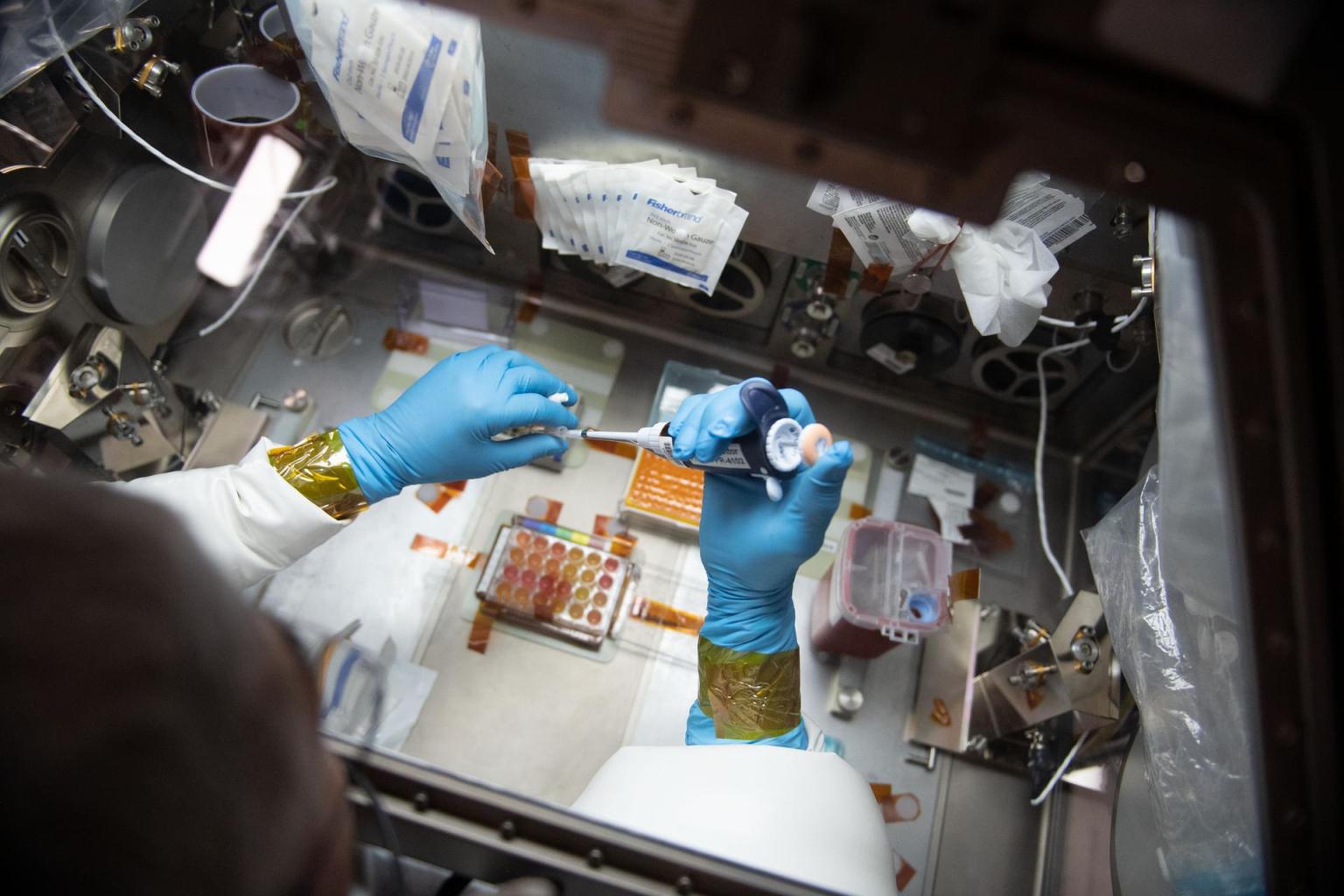NASA’s SpaceX Crew-5 mission is scheduled to launch to the International Space Station in early October from the agency’s Kennedy Space Center in Florida. It will carry NASA astronauts Josh Cassada and Nicole Mann, JAXA (Japan Aerospace Exploration Agency) astronaut Koichi Wakata and Roscosmos cosmonaut Anna Kikina to the orbiting laboratory for a six-month science mission.
Here are details on some of the science the crew will work on during their mission:
Every breath you take
Astronauts experience changes in their cardiovascular, respiratory, and musculoskeletal systems during spaceflight. These changes could pose a challenge on future long-duration missions, particularly those where crews encounter different levels of gravity and have minimal direct medical support. CARDIOBREATH, a Canadian Space Agency (CSA) investigation flying with the crew, examines deconditioning of the cardiorespiratory system and how it affects the control of blood pressure. Crew members wear a custom-fitted Bio-Monitor shirt that tracks heart rate, blood pressure, breathing rate, and activity level before, during, and after exercise. Results are compared to measurements taken before and after the astronauts’ missions.
Findings could provide insight into how blood pressure control adapts and help researchers develop ways to keep astronauts healthier in space. Some changes in the body that occur during spaceflight are similar to those seen in humans as they age on Earth; this research also may help improve the health of elderly patients around the globe.
Building a beating heart
Heart disease is the number one cause of death in the United States. Culturing human heart cells helps researchers study heart disease and discover and test new drug treatments. In microgravity, cells can grow into 3D cultures with better structure and properties than 2D cultures grown on Earth. In a previous study, MVP Cell-03, researchers successfully cultured cardiac cells on station and returned them to Earth for further study.
Project EAGLE studies how spaceflight affects properties of heart muscle cells derived from stem cells, continuing efforts to establish a functional 3D heart tissue model that researchers can use to test new drugs. This study is one of several sponsored by the National Science Foundation scheduled to fly to the space station this fall on Northrop Grumman’s 18th contracted commercial resupply services mission (Northrop Grumman CRS-18) with NASA.
Once the investigation reaches the space station, crew members inoculate thawed cultures into chambers of the Space Automated Bioproduct Laboratory, or SABL. The crew members exchange growth medium every four days, examine the cultures by microscopy, and harvest and freeze conditioned medium for later analysis.
Advancing bioprinting
An upgraded BioFabrication Facility (BFF) returns to the space station with the launch of Northrop Grumman CRS-18. On its first trip to space in 2019, the BFF successfully printed a partial human knee meniscus and a large volume of human heart cells. The shortage of organs for transplant means many potential recipients die before one becomes available. Microgravity enables the printing of tissue samples of higher quality than those printed on the ground, and 3D bioprinting technologies could help alleviate the organ shortage by printing replacement organs and tissues for transplant.
According to Aaron Rogers of Redwire, developer of the BFF, upgrades provide the ability to control the temperature of its printheads. “Many bioinks are temperature sensitive and some even end up solidifying at higher temperatures, but with BFF’s new cooled printheads, we no longer need to take that in consideration when developing new formulations,” he says. “These next investigations will use new formulations that were not possible in the previous configuration.”
Those investigations include BFF-Meniscus-2 and BFF-Cardiac. BFF-Meniscus-2 evaluates the biomechanical properties of 3D-printed knee cartilage tissue. Musculoskeletal injuries including tears in the meniscus are a leading health issue in the U.S. military. BFF-Cardiac studies 3D-printed cardiac tissue samples. Results could advance technologies for producing organs and tissues for transplant and for bioprinting foods and medicines on demand.
“Progress in tissue engineering has been consistent and roadblocks and problems are being overcome as they present themselves,” says Rogers, principal investigator on BFF-Cardiac. “With each new solution, we move closer to the promise of 3D-engineered tissues and organs for implantation.”
Observing liquids in microgravity
Fluid behavior and the performance of systems that involve liquids are affected by gravity. Liquid Behavior, a JAXA investigation, explores how liquids behave under gravitational environments different from Earth. Although scientists have previously conducted liquid experiments in microgravity, this is the first direct observation of liquid behavior in environments that simulate the gravity of the Moon and Mars. Results could improve the accuracy of models that predict how liquids behave and contribute to better design of space exploration systems such as lunar rovers, life support systems, and rocket fuel tanks.
“We expect more private companies to join with their own technologies for future exploration of the Moon and Mars, but hardware designed to work on Earth may not work well in the partial gravity of those environments,” says co-investigator Sakamoto Yusuke of JAXA. “The data acquired by this investigation could contribute to the development of the right hardware for Moon and Mars missions.”
The investigation uses the station’s Cell Biology Experimental Facility (CBEF), which can simulate the gravity environments of the Moon and Mars for long periods of time. Hardware flies to the space station on Northrop Grumman CRS-18.
Download high-resolution photos and videos of the research mentioned in this article.
Melissa Gaskill
International Space Station Program Research Office
Johnson Space Center



























